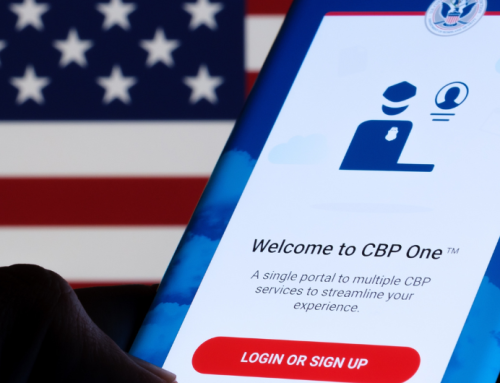
The Difference Between Visa, Status, and Lawful Presence
Immigration can be a complicated process, especially when it comes to understanding the differences between visa, status, and lawful presence. Therefore, in this blog, we aim to provide a clear and comprehensive explanation of these key terms so that you can better understand the U.S. immigration system and feel more confident about your journey toward lawful residency.
Firstly, a visa is a document stamped on your passport by the consulate that permits you to enter the United States. However, it is essential to note that a visa is only needed to enter the U.S. Once you enter the United States, the visa in your passport becomes irrelevant. It doesn’t guarantee entry to the States. Its sole purpose is to allow you to proceed to the Customs and Border Protection (CBP) officers, show them your visa, and if they do not see any red flags, they will give you your status. (Get inspired: What Really Affects Your Visa Approval Chances?)
This status will indicate how long you can stay in the U.S. with the type of visa you entered with. For example, you may have a tourist B1/B2 visa, valid for 5 years. But once you enter the U.S., you are limited to up to 6 months of stay. (Related post: After I entered the United States on B1/B2 visitor visa, the US consulate contacted me via e-mail and informed that my visa was revoked and canceled. Does this mean I am now out of status? What should I do?)
Alternatively, you may have a 1-year student visa in your passport, but once you enter the U.S., the CBP officer will give you a stamp in your passport indicating the status of D/S (duration of status), which essentially means you can stay in the U.S. as long as you are enrolled in school and maintain your student status. So, there is no end limit to a student status as long as you continue to study in the U.S.
The third term often used is lawful presence, which also coincides with status. Lawful presence is the period of authorized stay in the U.S.
For example, once you enter the U.S. with a visitor visa, you are given 6 months of status in the U.S., and the duration of that status is also known as lawful presence. However, there are circumstances where you can have a lawful presence without status.
For example, if you are here on a visitor visa and want to extend your stay in the U.S., and you apply for an extension of stay, but your status expires while you are waiting for the extension of your stay. The gap between those two times when your status is pending is known as lawful presence. The Department of Homeland Security (DHS) allows you to stay here and wait for the decision.
Another example is when you change your status. If you file for a change of status in the U.S. before your previous status expires or file for Adjustment of Status in the U.S., which is an application for permanent residency, during the pendency time of your case, you are lawfully present in the U.S. you have legal status while you are waiting for USCIS to make a decision on your green card application. (For more insights: 3 Myths about Adjustment of Status Process)
The term lawful presence is a policy applied by the DHS, which means that they will not try to deport you or put you in removal proceedings as a matter of policy because you lawfully applied for a change of status and you are waiting for the decision. So, even if your previous status expired, you are lawfully present in the U.S.
It’s crucial to know that having lawful permission to stay in the U.S. is essential to avoid getting banned from entering the country for 3 or 10 years. If you stay in the United States after your permission to stay expires, and you didn’t apply to extend it, and you remain between 6 months to 1 year, you might get banned from entering the U.S. for 3 years. If you stay for more than a year, you may get banned for 10 years.
In conclusion, while the terms visa, status, and lawful presence are often used interchangeably, they have distinct meanings and implications for your immigration status in the United States. A visa allows you to enter the U.S., while your status determines how long you can stay in the U.S. Lawful presence refers to your authorized period of stay in the U.S. and is closely tied to your status. Understanding these terms and their differences is critical to avoid any potential immigration issues.
If you need any assistance, including visa applications, adjustment of status, and more, the I.S. Law Firm is here to help. Our experienced immigration attorney will provide personalized guidance and support throughout the immigration process. Schedule a consultation today using the link: Schedule a Consultation – I.S. Law Firm, PLLC.






